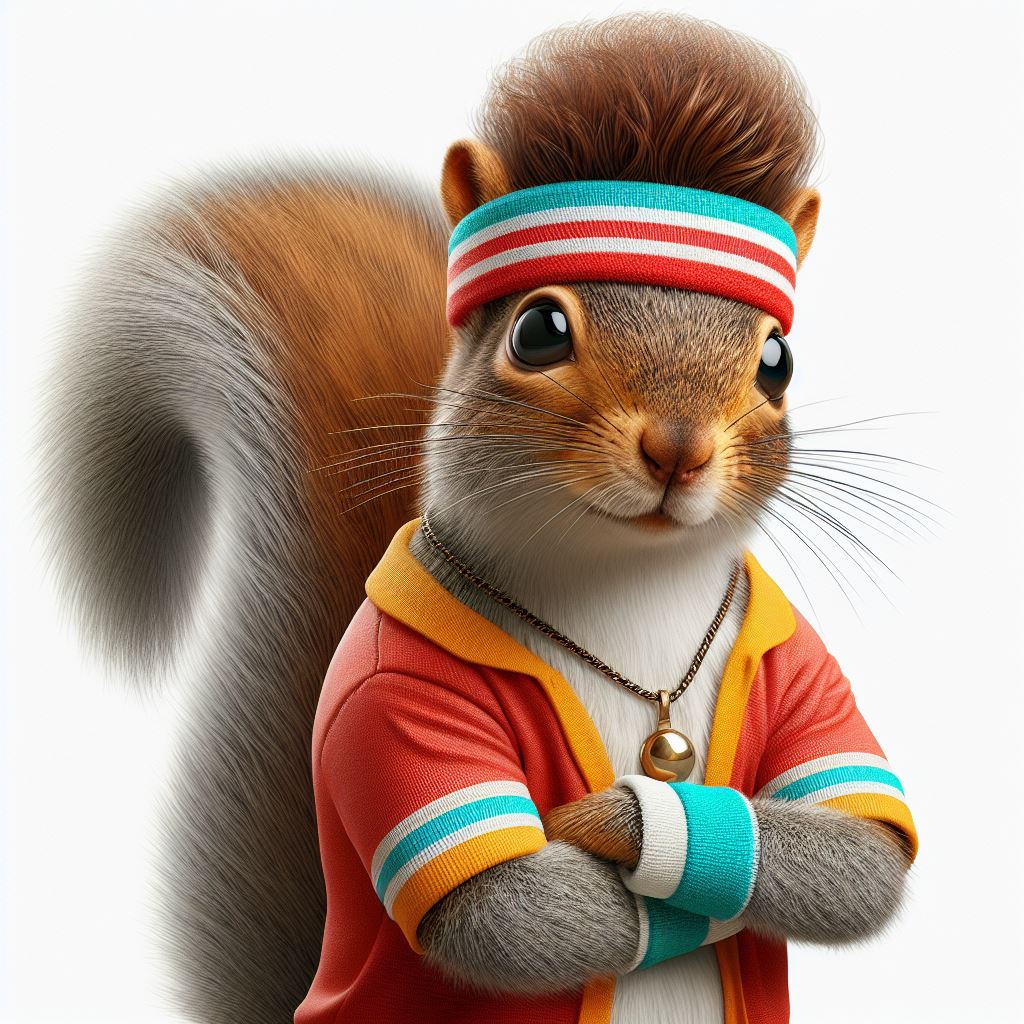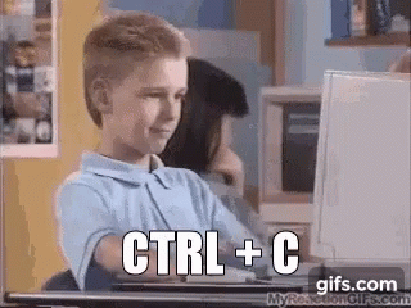Hello 👋
👩 Cara Thompson
👩💻 Love for patterns in music & language, and a fascination with the human brain %>%
Psychology PhD %>%
Analysis of postgraduate medical examinations %>%
Data Visualisation Consultant
💙 Helping others maximise the impact of their expertise
Find out more: cararthompson.com/about
The main aim for today
The main aim for today
The main aim for today
Let’s go!
Let’s go!
Change the theme
Let’s add some style!
Change the colours
palmerpenguins::penguins |>
ggplot() +
geom_point(aes(x = bill_length_mm,
y = flipper_length_mm,
colour = species),
size = 5,
alpha = 0.9) +
labs(title = "Flipper lengths are proportional to bill lengths within each species",
x = "Bill length (mm)",
y = "Flipper length (mm)") +
theme_minimal() +
scale_colour_manual(values = c("pink",
"orange",
"darkgreen"))Let’s add some style!
Change the colours - wait a minute…
head(palmerpenguins::penguins, 200) |>
ggplot() +
geom_point(aes(x = bill_length_mm,
y = flipper_length_mm,
colour = species),
size = 5,
alpha = 0.9) +
labs(title = "Flipper lengths are proportional to bill lengths within each species",
x = "Bill length (mm)",
y = "Flipper length (mm)") +
theme_minimal() +
scale_colour_manual(values = c("pink",
"orange",
"darkgreen"))Let’s add some style!
Mini tip #1: Named vectors for colours!
penguin_colours <- c(Adelie = "pink",
Chinstrap = "orange",
Gentoo = "darkgreen")
palmerpenguins::penguins |>
ggplot() +
geom_point(aes(x = bill_length_mm,
y = flipper_length_mm,
colour = species),
size = 5,
alpha = 0.9) +
labs(title = "Flipper lengths are proportional to bill lengths within each species",
x = "Bill length (mm)",
y = "Flipper length (mm)") +
theme_minimal() +
scale_colour_manual(values = penguin_colours)Let’s add some style!
Mini tip #1: Named vectors for colours!
penguin_colours <- c(Adelie = "pink",
Chinstrap = "orange",
Gentoo = "darkgreen")
head(palmerpenguins::penguins, 200) |>
ggplot() +
geom_point(aes(x = bill_length_mm,
y = flipper_length_mm,
colour = species),
size = 5,
alpha = 0.9) +
labs(title = "Flipper lengths are proportional to bill lengths within each species",
x = "Bill length (mm)",
y = "Flipper length (mm)") +
theme_minimal() +
scale_colour_manual(values = penguin_colours)Let’s add some style!
Mini tip #2: Invest in your own custom theme
penguin_colours <- c(Adelie = "pink",
Chinstrap = "orange",
Gentoo = "darkgreen")
palmerpenguins::penguins |>
ggplot() +
geom_point(aes(x = bill_length_mm,
y = flipper_length_mm,
colour = species),
size = 5,
alpha = 0.9) +
labs(title = "Flipper lengths are proportional to bill lengths within each species",
x = "Bill length (mm)",
y = "Flipper length (mm)",
colour = "") +
theme_dt_demo() +
scale_colour_manual(values = penguin_colours)Let’s add some style!
Mini tip #2: Invest in your own custom theme with relative text sizes
penguin_colours <- c(Adelie = "pink",
Chinstrap = "orange",
Gentoo = "darkgreen")
palmerpenguins::penguins |>
ggplot() +
geom_point(aes(x = bill_length_mm,
y = flipper_length_mm,
colour = species),
size = 5,
alpha = 0.9) +
labs(title = "Flipper lengths are proportional to bill lengths within each species",
x = "Bill length (mm)",
y = "Flipper length (mm)",
colour = "") +
theme_dt_demo(base_size = 16) +
scale_colour_manual(values = penguin_colours)Let’s add some annotations
I ❤️ {ggtext}
mean_x_y <- palmerpenguins::penguins |>
group_by(species) |>
summarise(mean_x = mean(bill_length_mm, na.rm = TRUE),
mean_y = mean(flipper_length_mm, na.rm = TRUE))
palmerpenguins::penguins |>
ggplot() +
geom_point(aes(x = bill_length_mm,
y = flipper_length_mm,
colour = species),
size = 5,
alpha = 0.9) +
ggtext::geom_textbox(data = mean_x_y,
aes(x = mean_x,
y = mean_y,
label = species),
size = 7) +
labs(title = "Flipper lengths are proportional to bill lengths within each species",
x = "Bill length (mm)",
y = "Flipper length (mm)",
colour = "") +
theme_dt_demo(16) +
scale_colour_manual(values = penguin_colours)Let’s add some annotations
I ❤️ {ggtext}
mean_x_y <- palmerpenguins::penguins |>
group_by(species) |>
summarise(mean_x = mean(bill_length_mm, na.rm = TRUE),
mean_y = mean(flipper_length_mm, na.rm = TRUE),
count = length(species))
palmerpenguins::penguins |>
ggplot() +
geom_point(aes(x = bill_length_mm,
y = flipper_length_mm,
colour = species),
size = 5,
alpha = 0.9,
show.legend = FALSE) +
ggtext::geom_textbox(data = mean_x_y,
aes(x = mean_x,
y = mean_y,
label = paste0("**", species, "**",
"<br>N = ", count)),
size = 7) +
labs(title = "Flipper lengths are proportional to bill lengths within each species",
x = "Bill length (mm)",
y = "Flipper length (mm)",
colour = "") +
theme_dt_demo(16) +
scale_colour_manual(values = penguin_colours)Let’s add some annotations
I ❤️ {ggtext}
mean_x_y <- palmerpenguins::penguins |>
group_by(species) |>
summarise(mean_x = mean(bill_length_mm, na.rm = TRUE),
mean_y = mean(flipper_length_mm, na.rm = TRUE),
mean_weight = mean(body_mass_g, na.rm = TRUE),
count = length(species))
palmerpenguins::penguins |>
ggplot() +
geom_point(aes(x = bill_length_mm,
y = flipper_length_mm,
colour = species),
size = 5,
alpha = 0.9,
show.legend = FALSE) +
ggtext::geom_textbox(data = mean_x_y,
aes(x = mean_x,
y = mean_y,
label = paste0("**", species, "**",
" (N = ", count, ")",
"<br>Mean weight: ", janitor::round_half_up(mean_weight/1000, 2), "kg")),
size = 7) +
labs(title = "Flipper lengths are proportional to bill lengths within each species",
x = "Bill length (mm)",
y = "Flipper length (mm)",
colour = "") +
theme_dt_demo(16) +
scale_colour_manual(values = penguin_colours)Let’s add some annotations
I ❤️ {ggtext}
mean_x_y <- palmerpenguins::penguins |>
group_by(species) |>
summarise(mean_x = mean(bill_length_mm, na.rm = TRUE),
mean_y = mean(flipper_length_mm, na.rm = TRUE),
mean_weight = mean(body_mass_g, na.rm = TRUE),
count = length(species))
palmerpenguins::penguins |>
ggplot() +
geom_point(aes(x = bill_length_mm,
y = flipper_length_mm,
colour = species,
size = body_mass_g),
size = 5,
alpha = 0.9,
show.legend = FALSE) +
ggtext::geom_textbox(data = mean_x_y,
aes(x = mean_x,
y = mean_y,
label = paste0("**", species, "**",
" (N = ", count, ")",
"<br>Mean weight: ", janitor::round_half_up(mean_weight/1000, 2), "kg")),
size = 7,
family = "Work Sans",
width = unit(20, "lines"),
fill = "#FEFDFA",
box.colour = NA,
alpha = 0.9,
halign = 0.5) +
labs(title = "Flipper lengths are proportional to bill lengths within each species",
x = "Bill length (mm)",
y = "Flipper length (mm)",
colour = "") +
theme_dt_demo() +
scale_colour_manual(values = penguin_colours)From basic to styled and annotated
From basic to styled and annotated
Let’s
dance!
Parameterisation #1: Different data
Parameterisation #1: Different data
“Oh, I’m sorry, I actually just wanted the first 200 penguins…”
mean_x_y <- head(palmerpenguins::penguins, 200) |>
group_by(species) |>
summarise(mean_x = mean(bill_length_mm, na.rm = TRUE),
mean_y = mean(flipper_length_mm, na.rm = TRUE),
mean_weight = mean(body_mass_g, na.rm = TRUE),
count = length(species))
head(palmerpenguins::penguins, 200) |>
ggplot() +
geom_point(aes(x = bill_length_mm,
y = flipper_length_mm,
colour = species,
size = body_mass_g),
size = 5,
alpha = 0.9,
show.legend = FALSE) +
ggtext::geom_textbox(data = mean_x_y,
aes(x = mean_x,
y = mean_y,
label = paste0("**", species, "**",
" (N = ", count, ")",
"<br>Mean weight: ", janitor::round_half_up(mean_weight/1000, 2), "kg")),
size = 7,
family = "Work Sans",
width = unit(20, "lines"),
fill = "#FEFDFA",
box.colour = NA,
alpha = 0.9,
halign = 0.5) +
labs(title = "Flipper lengths are proportional to bill lengths within each species",
x = "Bill length (mm)",
y = "Flipper length (mm)",
colour = "") +
theme_dt_demo(16) +
scale_colour_manual(values = penguin_colours)Parameterisation #1: Different data
“Hmm, wait, could do both, for comparison?”
Parameterisation #1: Different data
“… and could we check with 300 and 400 also?”
Parameterisation #1: Different data
“I realise the meeting is in 5 minutes, but I really don’t like those fonts and colours… Could you change them?”
Parameterisation #1: Different data
Our starting point
mean_x_y <- palmerpenguins::penguins |>
group_by(species) |>
summarise(mean_x = mean(bill_length_mm, na.rm = TRUE),
mean_y = mean(flipper_length_mm, na.rm = TRUE),
mean_weight = mean(body_mass_g, na.rm = TRUE),
count = length(species))
palmerpenguins::penguins |>
ggplot() +
geom_point(aes(x = bill_length_mm,
y = flipper_length_mm,
colour = species,
size = body_mass_g),
size = 5,
alpha = 0.9,
show.legend = FALSE) +
ggtext::geom_textbox(data = mean_x_y,
aes(x = mean_x,
y = mean_y,
label = paste0("**", species, "**",
" (N = ", count, ")",
"<br>Mean weight: ", janitor::round_half_up(mean_weight/1000, 2), "kg")),
size = 7,
family = "Work Sans",
width = unit(20, "lines"),
fill = "#FEFDFA",
box.colour = NA,
alpha = 0.9,
halign = 0.5) +
labs(title = "Flipper lengths are proportional to bill lengths within each species",
x = "Bill length (mm)",
y = "Flipper length (mm)",
colour = "") +
theme_dt_demo(16) +
scale_colour_manual(values = penguin_colours)Parameterisation #1: Different data
Mini tips #3 and #4: Defaults and environments
make_penguin_plot <- function(df = palmerpenguins::penguins,
colours = penguin_colours) {
mean_x_y <- df |>
group_by(species) |>
summarise(mean_x = mean(bill_length_mm, na.rm = TRUE),
mean_y = mean(flipper_length_mm, na.rm = TRUE),
mean_weight = mean(body_mass_g, na.rm = TRUE),
count = length(species))
df |>
ggplot() +
geom_point(aes(x = bill_length_mm,
y = flipper_length_mm,
colour = species,
size = body_mass_g),
size = 5,
alpha = 0.9,
show.legend = FALSE) +
ggtext::geom_textbox(data = mean_x_y,
aes(x = mean_x,
y = mean_y,
label = paste0("**", species, "**",
" (N = ", count, ")",
"<br>Mean weight: ", janitor::round_half_up(mean_weight/1000, 2), "kg")),
size = 7,
family = "Work Sans",
width = unit(20, "lines"),
fill = "#FEFDFA",
box.colour = NA,
alpha = 0.9,
halign = 0.5) +
labs(title = "Flipper lengths are proportional to bill lengths within each species",
x = "Bill length (mm)",
y = "Flipper length (mm)",
colour = "") +
theme_dt_demo(16) +
scale_colour_manual(values = colours)
}Parameterisation #1: Different data
Let’s see the original again…
Parameterisation #1: Different data
And can we do it with just the first 300 and 400 penguins?
Parameterisation #1: Different data
Actually, let’s do it by island…
Parameterisation #2: Different grouping
Parameterisation #2: Different grouping
Rather than grouping by species, can we group by island?
make_penguin_plot <- function(df = palmerpenguins::penguins,
colours = penguin_colours) {
mean_x_y <- df |>
group_by(species) |>
summarise(mean_x = mean(bill_length_mm, na.rm = TRUE),
mean_y = mean(flipper_length_mm, na.rm = TRUE),
mean_weight = mean(body_mass_g, na.rm = TRUE),
count = length(species))
df |>
ggplot() +
geom_point(aes(x = bill_length_mm,
y = flipper_length_mm,
colour = species,
size = body_mass_g),
size = 5,
alpha = 0.9,
show.legend = FALSE) +
ggtext::geom_textbox(data = mean_x_y,
aes(x = mean_x,
y = mean_y,
label = paste0("**", species, "**",
" (N = ", count, ")",
"<br>Mean weight: ", janitor::round_half_up(mean_weight/1000, 2), "kg")),
size = 7,
family = "Work Sans",
width = unit(20, "lines"),
fill = "#FEFDFA",
box.colour = NA,
alpha = 0.9,
halign = 0.5) +
labs(title = "Flipper lengths are proportional to bill lengths within each species",
x = "Bill length (mm)",
y = "Flipper length (mm)",
colour = "") +
theme_dt_demo(16) +
scale_colour_manual(values = colours)
}Parameterisation #2: Different grouping
This doesn’t work…
make_penguin_plot <- function(df = palmerpenguins::penguins,
colours = penguin_colours,
grouping_variable = species) {
mean_x_y <- df |>
group_by(grouping_variable) |>
summarise(mean_x = mean(bill_length_mm, na.rm = TRUE),
mean_y = mean(flipper_length_mm, na.rm = TRUE),
mean_weight = mean(body_mass_g, na.rm = TRUE),
count = length(grouping_variable))
df |>
ggplot() +
geom_point(aes(x = bill_length_mm,
y = flipper_length_mm,
colour = grouping_variable),
size = 5,
alpha = 0.9,
show.legend = FALSE) +
ggtext::geom_textbox(data = mean_x_y,
aes(x = mean_x,
y = mean_y,
label = paste0("**", grouping_variable, "**",
" (N = ", count, ")",
"<br>Mean weight: ", janitor::round_half_up(mean_weight/1000, 2), "kg")),
size = 7,
family = "Work Sans",
width = unit(20, "lines"),
fill = "#FEFDFA",
box.colour = NA,
alpha = 0.9,
halign = 0.5) +
labs(title = paste0("Flipper lengths are proportional to bill lengths within each ",
grouping_variable),
x = "Bill length (mm)",
y = "Flipper length (mm)",
colour = "") +
theme_dt_demo(16) +
scale_colour_manual(values = colours)
}Parameterisation #2: Different grouping
We need get()!
make_penguin_plot <- function(df = palmerpenguins::penguins,
colours = penguin_colours,
grouping_variable = "species") {
mean_x_y <- df |>
group_by(get(grouping_variable)) |>
summarise(mean_x = mean(bill_length_mm, na.rm = TRUE),
mean_y = mean(flipper_length_mm, na.rm = TRUE),
mean_weight = mean(body_mass_g, na.rm = TRUE),
count = length(get(grouping_variable)))
df |>
ggplot() +
geom_point(aes(x = bill_length_mm,
y = flipper_length_mm,
colour = get(grouping_variable),
size = body_mass_g),
size = 5,
alpha = 0.9,
show.legend = FALSE) +
ggtext::geom_textbox(data = mean_x_y,
aes(x = mean_x,
y = mean_y,
label = paste0("**", get(grouping_variable), "**",
" (N = ", count, ")",
"<br>Mean weight: ", janitor::round_half_up(mean_weight/1000, 2), "kg")),
size = 7,
family = "Work Sans",
width = unit(20, "lines"),
fill = "#FEFDFA",
box.colour = NA,
alpha = 0.9,
halign = 0.5) +
labs(title = paste0("Flipper lengths are proportional to bill lengths within each ",
grouping_variable),
x = "Bill length (mm)",
y = "Flipper length (mm)",
colour = "") +
theme_dt_demo(16) +
scale_colour_manual(values = colours)
}Parameterisation #2: Different grouping
get()? Interpret string into object name, return its value
Parameterisation #2: Different grouping
get()? Interpret string as object name, return its value
Parameterisation #2: Different grouping
Still one thing to fix…
Error in `ggtext::geom_textbox()`:
! Problem while computing aesthetics.
i Error occurred in the 2nd layer.
Caused by error in `get()`:
! object 'species' not founddebug(make_penguin_plot)
Parameterisation #2: Different grouping
👀 the first column name…
make_penguin_plot <- function(df = palmerpenguins::penguins,
colours = penguin_colours,
grouping_variable = "species") {
mean_x_y <- df |>
group_by(get(grouping_variable)) |>
summarise(mean_x = mean(bill_length_mm, na.rm = TRUE),
mean_y = mean(flipper_length_mm, na.rm = TRUE),
mean_weight = mean(body_mass_g, na.rm = TRUE),
count = length(get(grouping_variable)))
df |>
ggplot() +
geom_point(aes(x = bill_length_mm,
y = flipper_length_mm,
colour = get(grouping_variable),
size = body_mass_g),
size = 5,
alpha = 0.9,
show.legend = FALSE) +
ggtext::geom_textbox(data = mean_x_y,
aes(x = mean_x,
y = mean_y,
label = paste0("**", `get(grouping_variable)`, "**",
" (N = ", count, ")",
"<br>Mean weight: ", janitor::round_half_up(mean_weight/1000, 2), "kg")),
size = 7,
family = "Work Sans",
width = unit(20, "lines"),
fill = "#FEFDFA",
box.colour = NA,
alpha = 0.9,
halign = 0.5) +
labs(title = paste0("Flipper lengths are proportional to bill lengths within each ",
grouping_variable),
x = "Bill length (mm)",
y = "Flipper length (mm)",
colour = "") +
theme_dt_demo(16) +
scale_colour_manual(values = colours)
}Parameterisation #2: Different grouping
Rather than grouping by species, can we group by island?
Parameterisation #2: Different grouping
We need more colours!
Parameterisation #2: Different grouping
Actually, can we just look at a few different grouping options?
Parameterisation #2: Different grouping
Let’s make the labels optional!
make_penguin_plot <- function(df = palmerpenguins::penguins,
colours = penguin_colours,
grouping_variable = "species",
add_labels = TRUE) {
mean_x_y <- df |>
group_by(get(grouping_variable)) |>
summarise(mean_x = mean(bill_length_mm, na.rm = TRUE),
mean_y = mean(flipper_length_mm, na.rm = TRUE),
mean_weight = mean(body_mass_g, na.rm = TRUE),
count = length(get(grouping_variable)))
unlabelled_plot <- df |>
ggplot() +
geom_point(aes(x = bill_length_mm,
y = flipper_length_mm,
colour = get(grouping_variable),
size = body_mass_g),
size = 5,
alpha = 0.9) +
# Reinstated the legend
labs(title = paste0("Flipper lengths are proportional to bill lengths within each ",
grouping_variable),
x = "Bill length (mm)",
y = "Flipper length (mm)",
colour = "") +
theme_dt_demo(16) +
scale_colour_manual(values = colours)
if(add_labels == TRUE) {
unlabelled_plot +
ggtext::geom_textbox(data = mean_x_y,
aes(x = mean_x,
y = mean_y,
label = paste0("**", `get(grouping_variable)`, "**",
" (N = ", count, ")",
"<br>Mean weight: ", janitor::round_half_up(mean_weight/1000, 2), "kg")),
size = 7,
family = "Work Sans",
width = unit(20, "lines"),
fill = "#FEFDFA",
box.colour = NA,
alpha = 0.9,
halign = 0.5) +
theme(legend.position = "none")
} else {
unlabelled_plot
}
}Parameterisation #2: Different grouping
Actually, can we just look at a few different grouping options?
Parameterisation #2: Different grouping
Ok, now split by island within each sex.
Parameterisation #3: Different styling
Parameterisation #3: Different styling
Switching off the labels
Parameterisation #3: Different styling
Add an optional subtitle
make_penguin_plot <- function(df = palmerpenguins::penguins,
colours = penguin_colours,
grouping_variable = "species",
subtitle = NA,
add_labels = TRUE) {
mean_x_y <- df |>
group_by(get(grouping_variable)) |>
summarise(mean_x = mean(bill_length_mm, na.rm = TRUE),
mean_y = mean(flipper_length_mm, na.rm = TRUE),
mean_weight = mean(body_mass_g, na.rm = TRUE),
count = length(get(grouping_variable)))
unlabelled_plot <- df |>
ggplot() +
geom_point(aes(x = bill_length_mm,
y = flipper_length_mm,
colour = get(grouping_variable),
size = body_mass_g),
size = 5,
alpha = 0.9) +
# Reinstated the legend
labs(title = paste0("Flipper lengths are proportional to bill lengths within each ",
grouping_variable),
x = "Bill length (mm)",
y = "Flipper length (mm)",
colour = "") +
theme_dt_demo(16) +
scale_colour_manual(values = colours)
if(add_labels == TRUE) {
plot_to_export <- unlabelled_plot +
ggtext::geom_textbox(data = mean_x_y,
aes(x = mean_x,
y = mean_y,
label = paste0("**", `get(grouping_variable)`, "**",
" (N = ", count, ")",
"<br>Mean weight: ", janitor::round_half_up(mean_weight/1000, 2), "kg")),
size = 7,
family = "Work Sans",
width = unit(20, "lines"),
fill = "#FEFDFA",
box.colour = NA,
alpha = 0.9,
halign = 0.5) +
theme(legend.position = "none")
} else {
plot_to_export <- unlabelled_plot
}
if(!is.na(subtitle)) {
plot_to_export +
labs(subtitle = subtitle)
} else {
plot_to_export
}
}Parameterisation #3: Different styling
Add optional subtitle
Parameterisation #3: Different styling
The magic of ...
make_penguin_plot <- function(df = palmerpenguins::penguins,
colours = penguin_colours,
grouping_variable = "species",
subtitle = NA,
add_labels = TRUE,
...) {
mean_x_y <- df |>
group_by(get(grouping_variable)) |>
summarise(mean_x = mean(bill_length_mm, na.rm = TRUE),
mean_y = mean(flipper_length_mm, na.rm = TRUE),
mean_weight = mean(body_mass_g, na.rm = TRUE),
count = length(get(grouping_variable)))
unlabelled_plot <- df |>
ggplot() +
geom_point(aes(x = bill_length_mm,
y = flipper_length_mm,
colour = get(grouping_variable),
size = body_mass_g),
size = 5,
alpha = 0.9) +
# Reinstated the legend
labs(title = paste0("Flipper lengths are proportional to bill lengths within each ",
grouping_variable),
x = "Bill length (mm)",
y = "Flipper length (mm)",
colour = "") +
theme_dt_demo(16) +
scale_colour_manual(values = colours) +
theme(...)
if(add_labels == TRUE) {
plot_to_export <- unlabelled_plot +
ggtext::geom_textbox(data = mean_x_y,
aes(x = mean_x,
y = mean_y,
label = paste0("**", `get(grouping_variable)`, "**",
" (N = ", count, ")",
"<br>Mean weight: ", janitor::round_half_up(mean_weight/1000, 2), "kg")),
size = 7,
family = "Work Sans",
width = unit(20, "lines"),
fill = "#FEFDFA",
box.colour = NA,
alpha = 0.9,
halign = 0.5) +
theme(legend.position = "none")
} else {
plot_to_export <- unlabelled_plot
}
if(!is.na(subtitle)) {
plot_to_export +
labs(subtitle = subtitle)
} else {
plot_to_export
}
}Parameterisation #3: Different styling
The magic of ...
Parameterisation #3: Different styling
A more sensible use case…











































